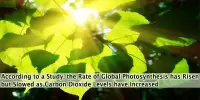More carbon is stored in soil than in plants and the atmosphere combined, and soil bacteria play a significant role in this process. However, this delicate ecosystem could be harmed by the increased frequency and severity of droughts, such as those that have been affecting California.
Microbial ecologist Steven Allison issues a warning in a viewpoint that will appear in the journal Trends in Microbiology on April 12, 2023, stating that soil health and future greenhouse gas levels may be affected if soil bacteria adapt to drought more quickly than plants. He argues that we need to better understand how microbes respond to drought so that we can manage the situation in both agricultural and natural settings.
“Soil microbes are beneficial, and we couldn’t live without their cycling of carbon and nutrients, but climate change and drought can tweak that balance, and we have to be aware of how it’s changing,” says Allison of the University of California, Irvine.
While some soil bacteria release plant carbon back into the atmosphere, others capture carbon from decaying plants and store it in the soil. There are several advantages to the carbon that ends up in the soil.
“The carbon in the soil has these reverberating effects out to the rest of the world in terms of the infrastructure in our natural and managed ecosystems,” says Allison. “Carbon-rich soils hold more nutrients, so plants growing in those soils tend to be more productive, and the carbon changes the physical properties of the soil, which prevents erosion.”
“In California now, we have this system where the droughts are more intense, and then the rainfall is more intense,” he says. “So, if you’re losing your soil carbon, when it rains really hard it could carry away your soil and cause erosion, landslides, mudslides, sediments, and all kinds of problems that we’re actually seeing right now.”
There’s a lot of potential for us to manage or engineer soil microbes. In agricultural systems, we can look into manipulating the soil or adding beneficial microbes back in. In more natural systems, management would probably be on the plant side: soil microbes are often closely intertwined with plants, so managing the plants can also benefit the microbial part of the ecosystem.
Steven Allison
The carbon that is released back into the atmosphere is another story. “From a climate mitigation standpoint, what we want is for more carbon to be in plants and soils and less carbon to be in the atmosphere, so the more carbon we can absorb into plants through photosynthesis and the more we can transfer and keep in the soil, the better off we’re going to be in terms of climate change,” says Allison. “That’s why it’s really important to know how the balance of incoming versus outflowing carbon changes with drought, or warming, or any other climate factor.”
The rising frequency of droughts will have an impact on both plants and bacteria, but Allison thinks microbes will be able to recover more quickly.
“Microbes are really adaptable they can change their physiology, they can change their abundances so that more drought-adapted microbes take over, and they can potentially evolve so we expect that they are going to resist or bounce back from drought,” says Allison. “All those different processes can happen pretty quickly with microbes, and much more quickly than with plants.”
We could end up with carbon-depleted soils, which would have major negative effects on plant production and future greenhouse gas levels if more carbon-releasing microorganisms survive than carbon-sequestering microbes.
We may be able to nudge the balance in the right direction, Allison says, but more research is needed first. “There’s still a lot to be done. Right now, we have data that suggests that when we have drought, something changes that results in carbon loss, but we don’t understand exactly how or why that’s happening, whether drought’s changing the abundance of beneficial plant associated microbes versus the carbon releasing microbes, or if it’s causing the evolution of one of the microbe groups, or if it’s more determined by changes to their immediate physiology,” says Allison.
Some microbes could actually help plants cope with drought. We could attempt to shift the scale in favor of plants if we knew which bacteria were most advantageous to them and most likely to hold onto carbon in the soil.
“There’s a lot of potential for us to manage or engineer soil microbes,” says Allison. “In agricultural systems, we can look into manipulating the soil or adding beneficial microbes back in. In more natural systems, management would probably be on the plant side: soil microbes are often closely intertwined with plants, so managing the plants can also benefit the microbial part of the ecosystem.”
“We also need more measurements to get a good sense of how drought affects soil carbon change in different ecosystems,” says Allison. “There’s a lot of landscape out there from the Arctic tundra to the deserts and we could use more research across those diverse habitats.”
















